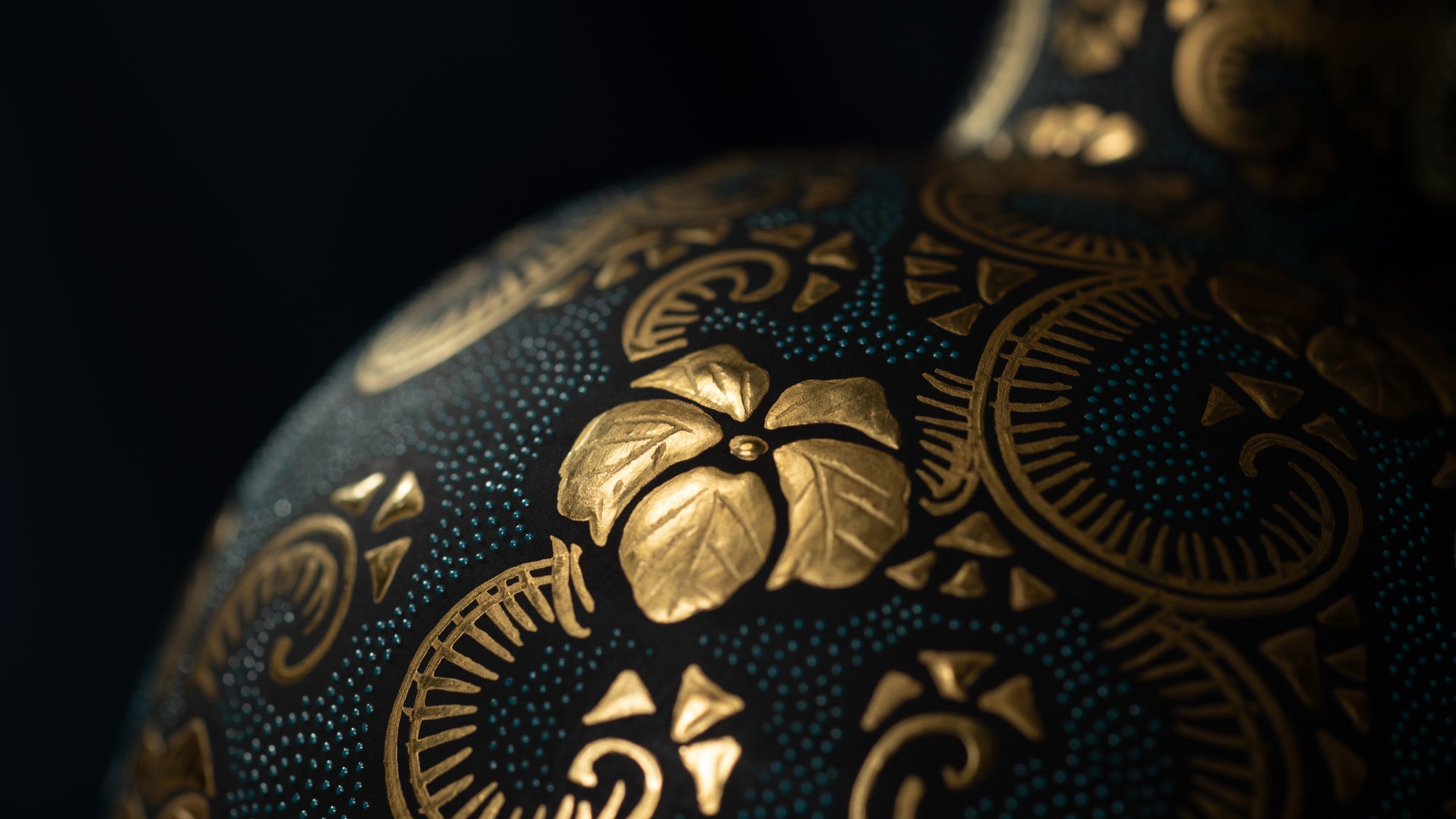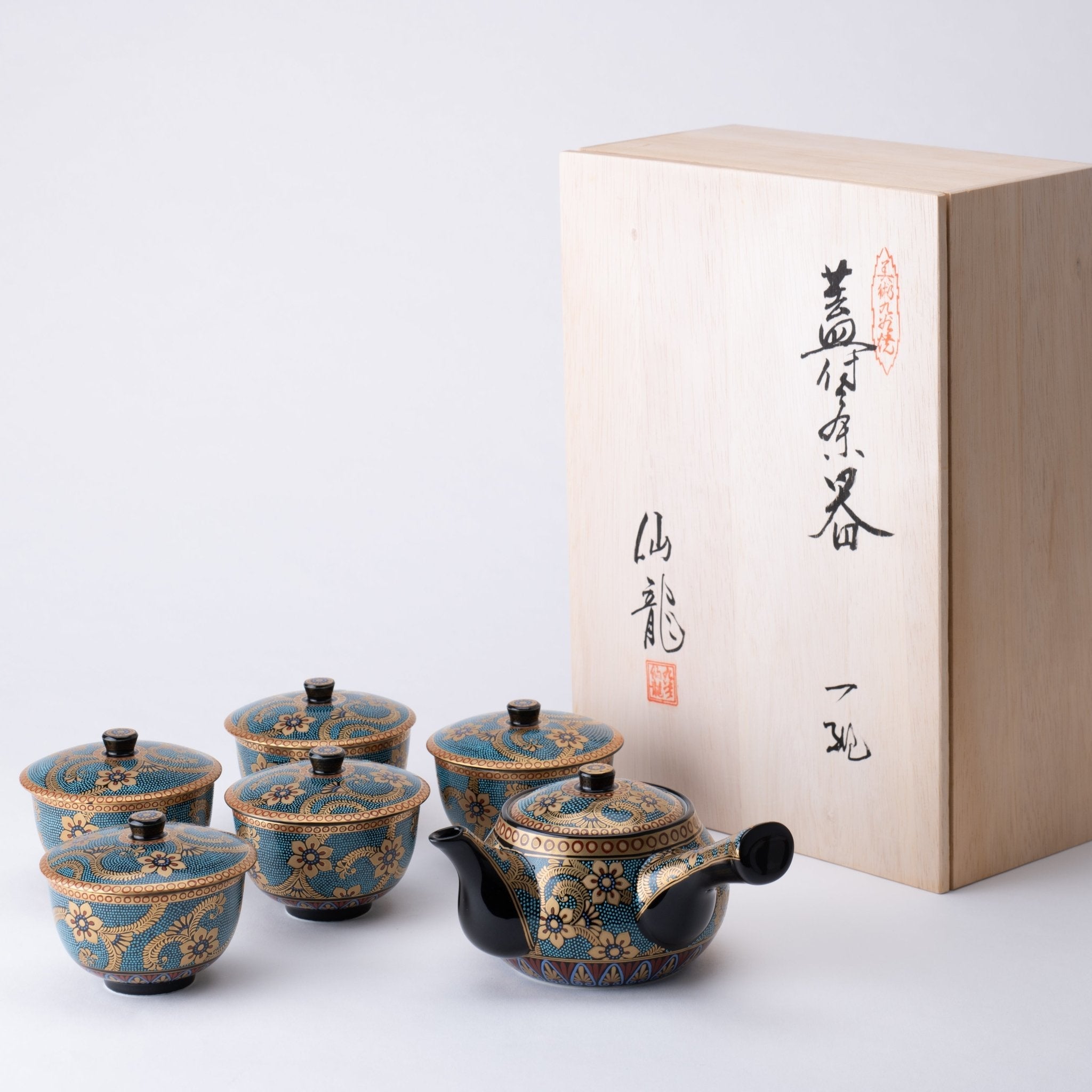
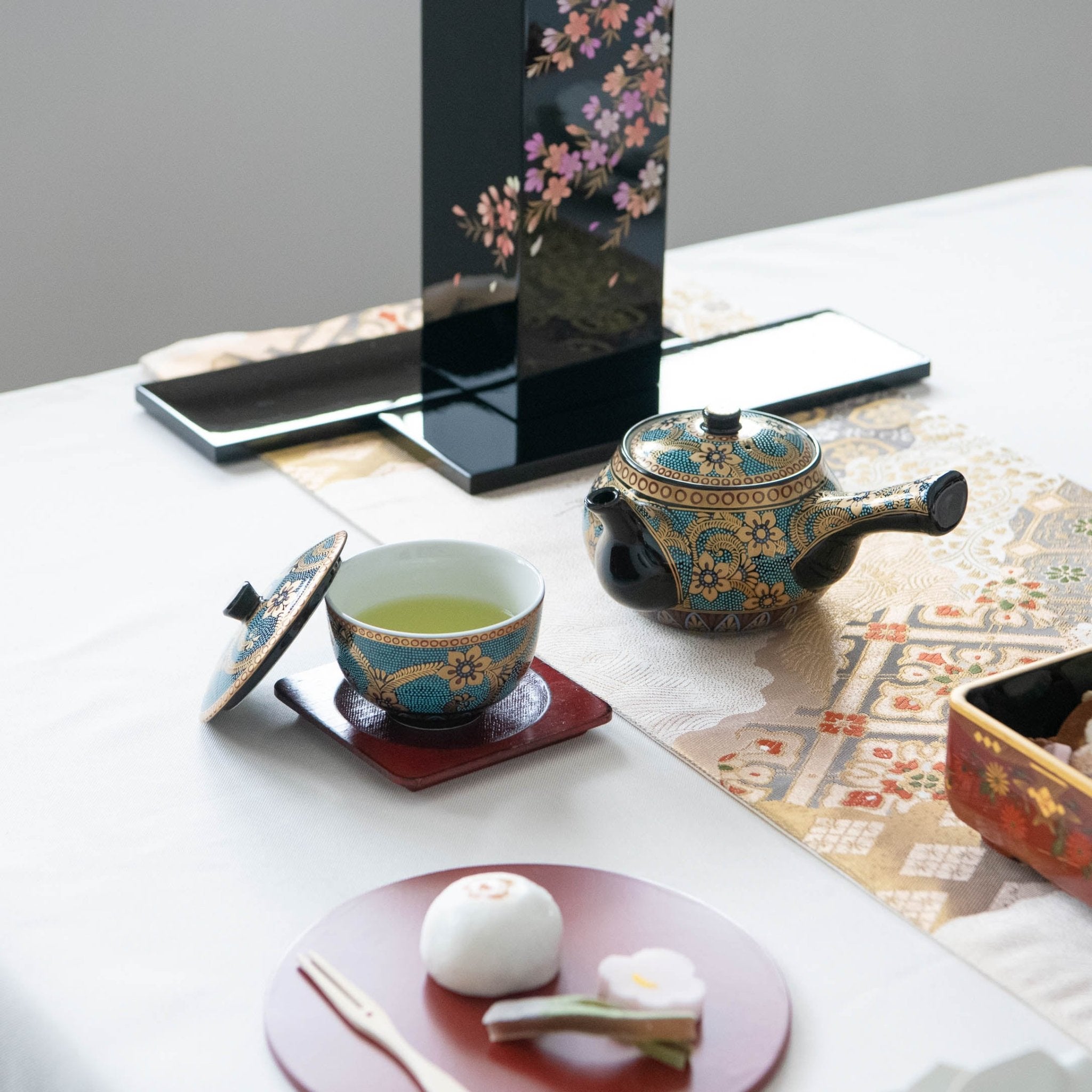
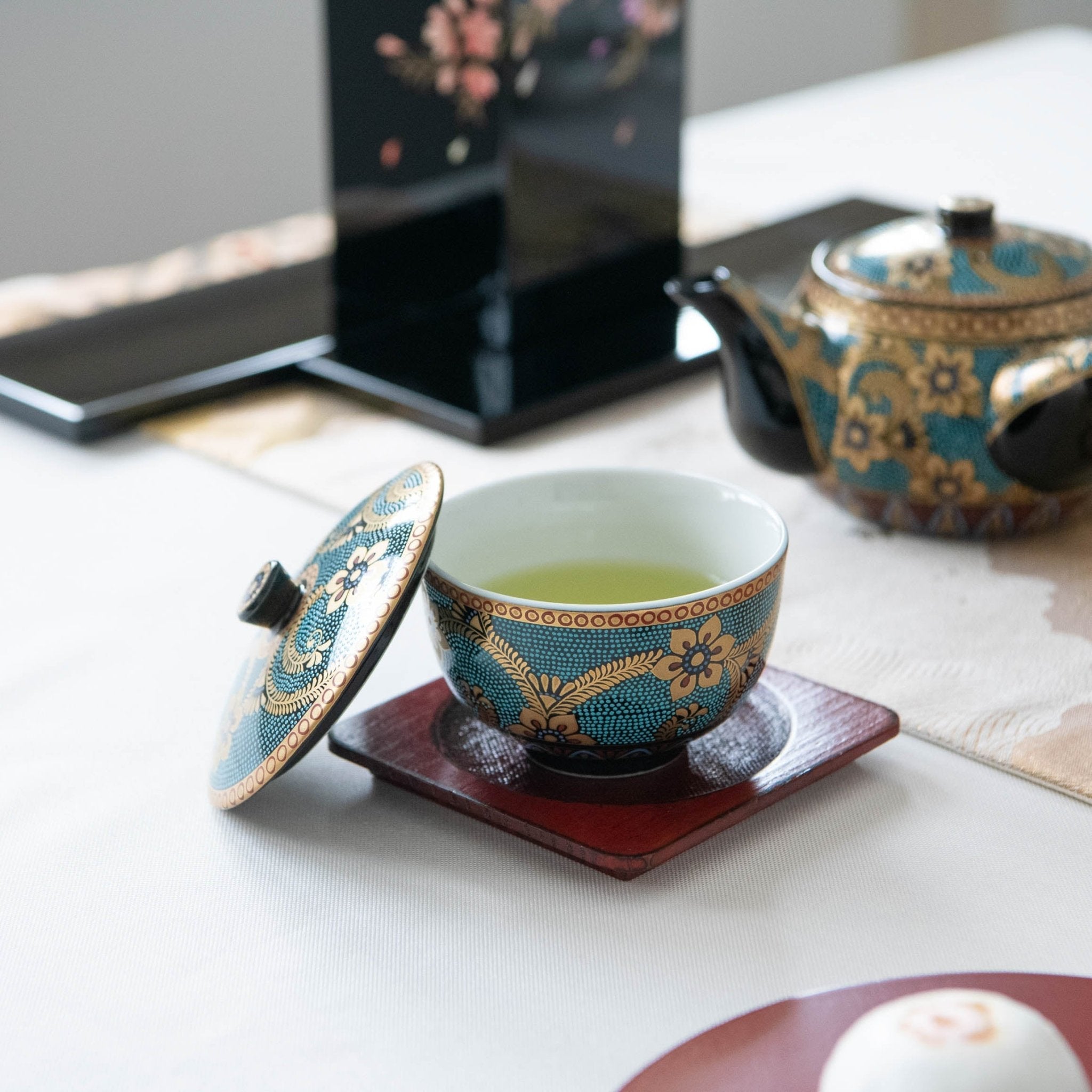
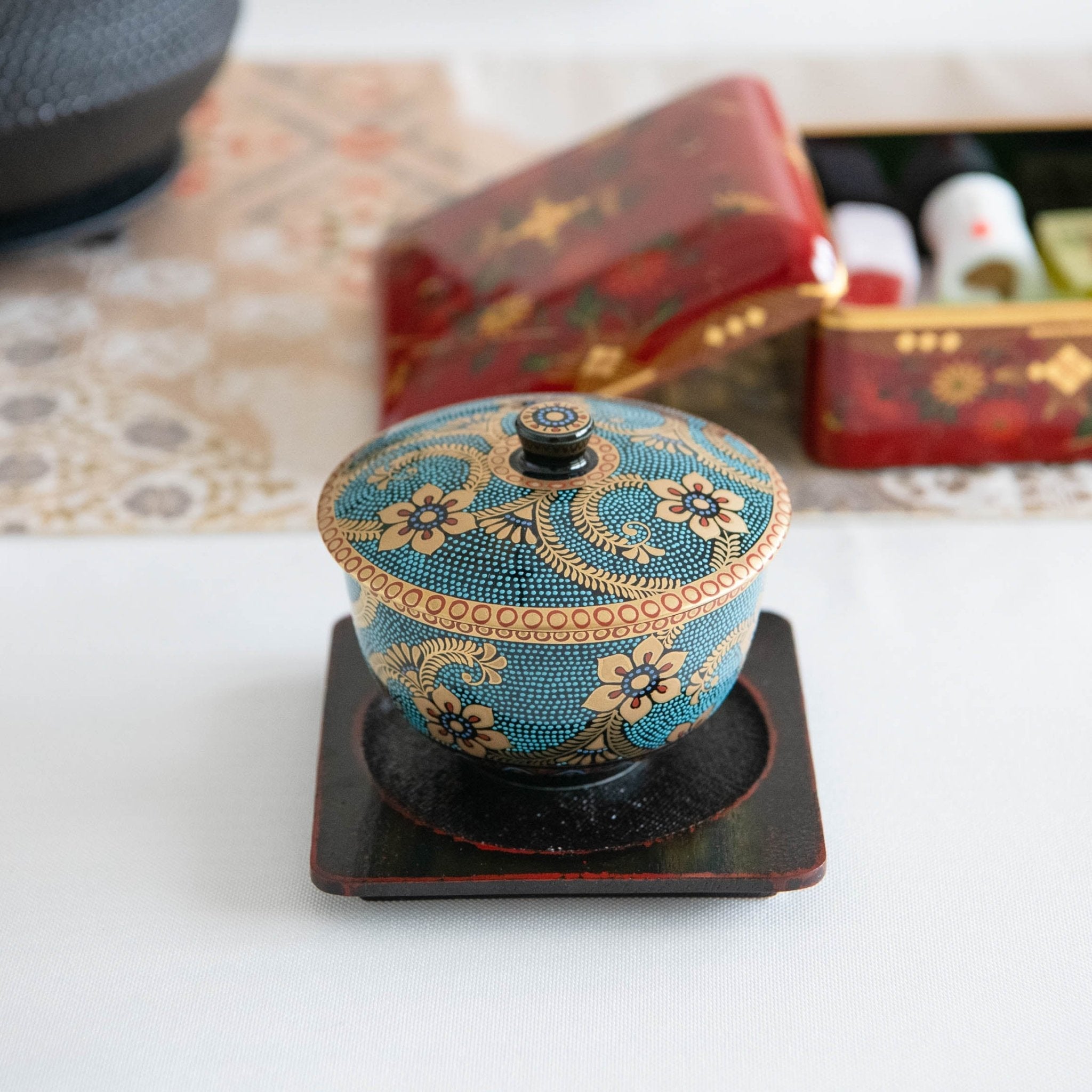
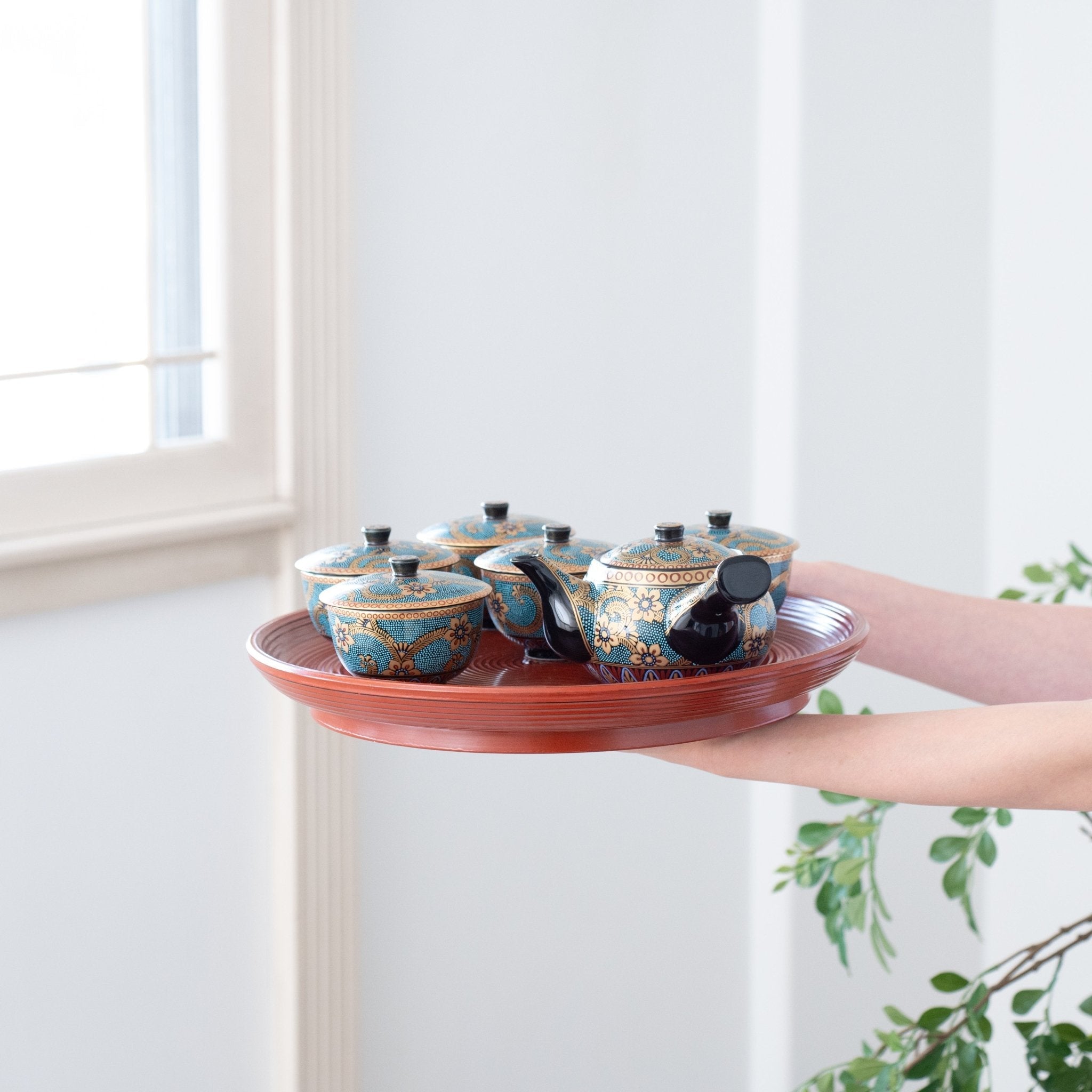
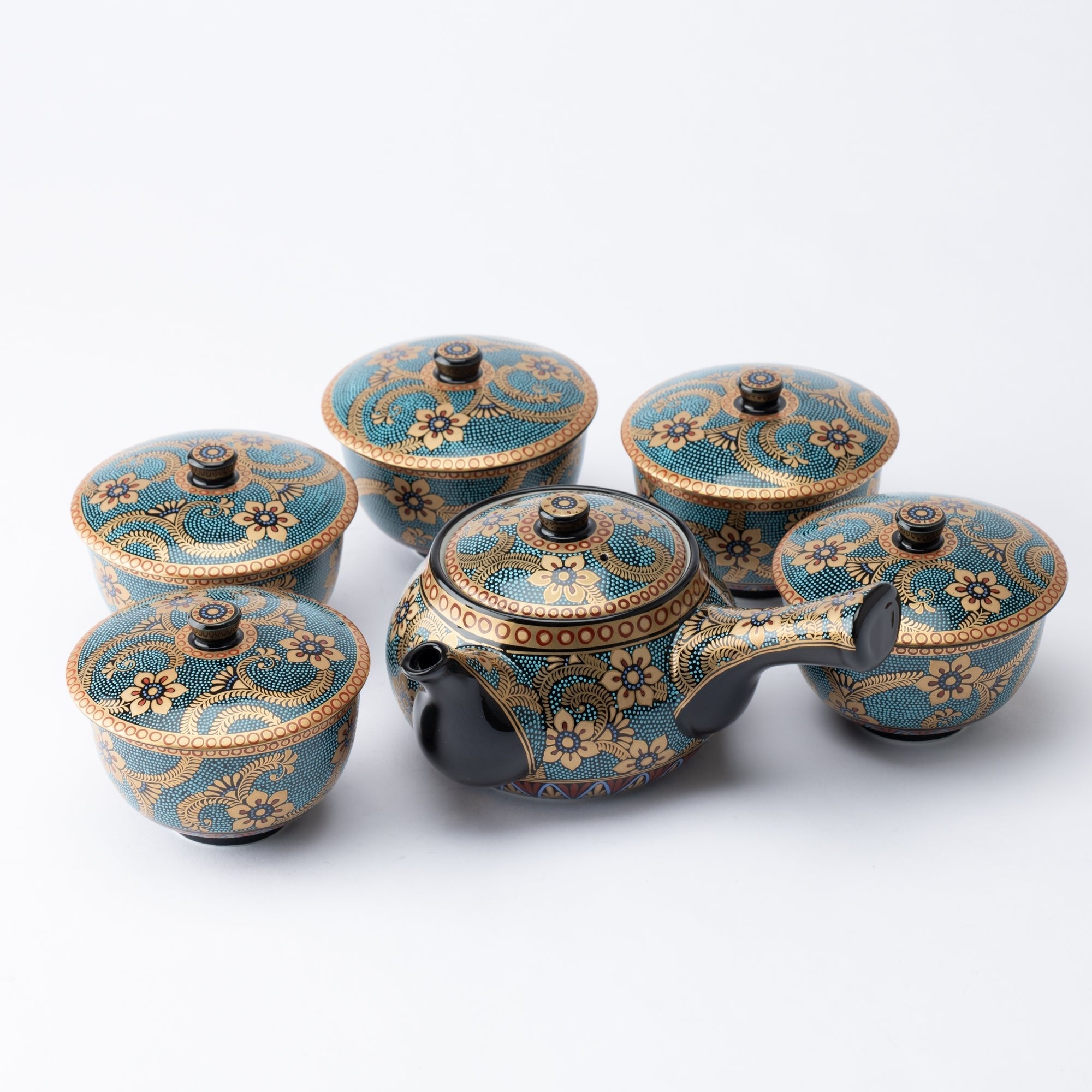
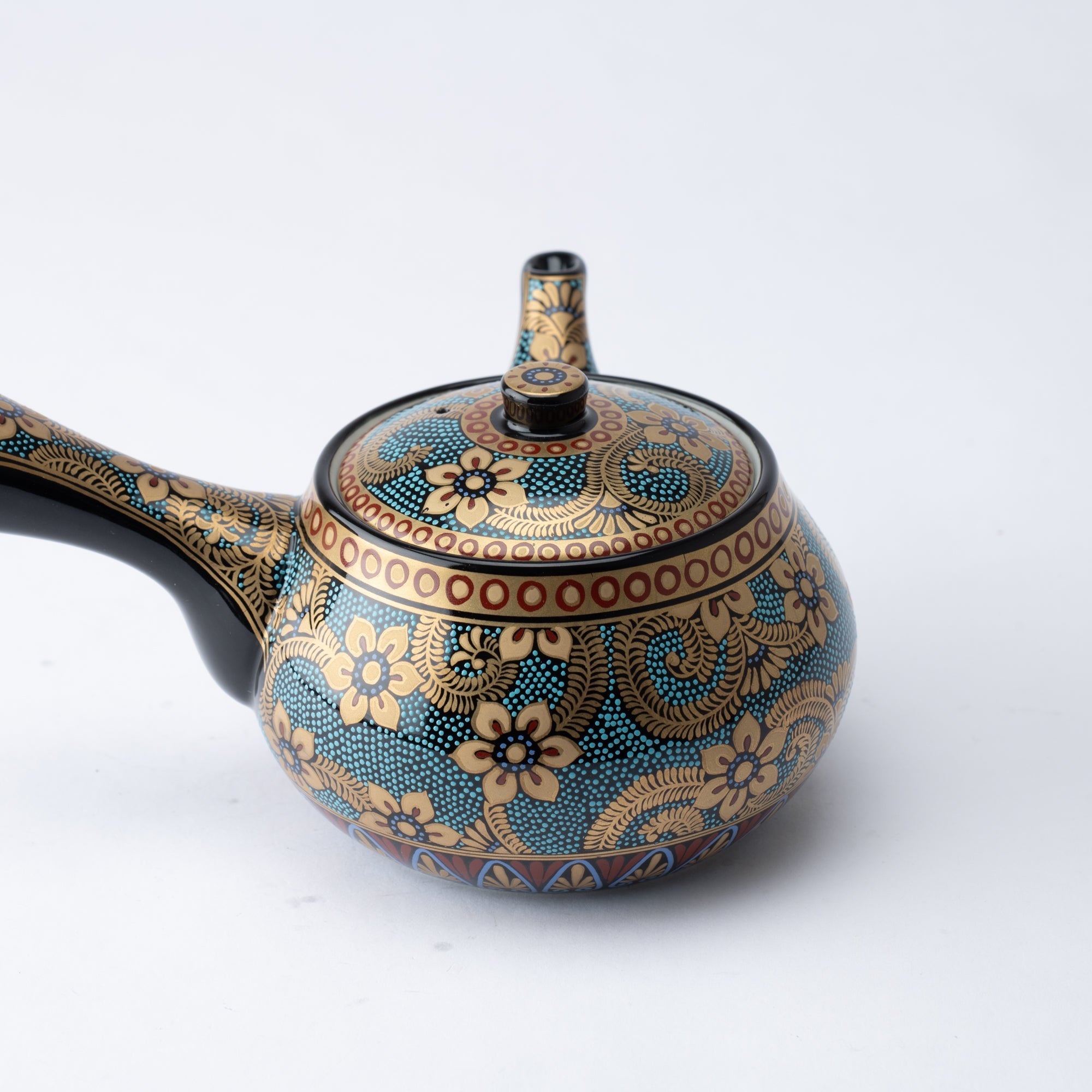
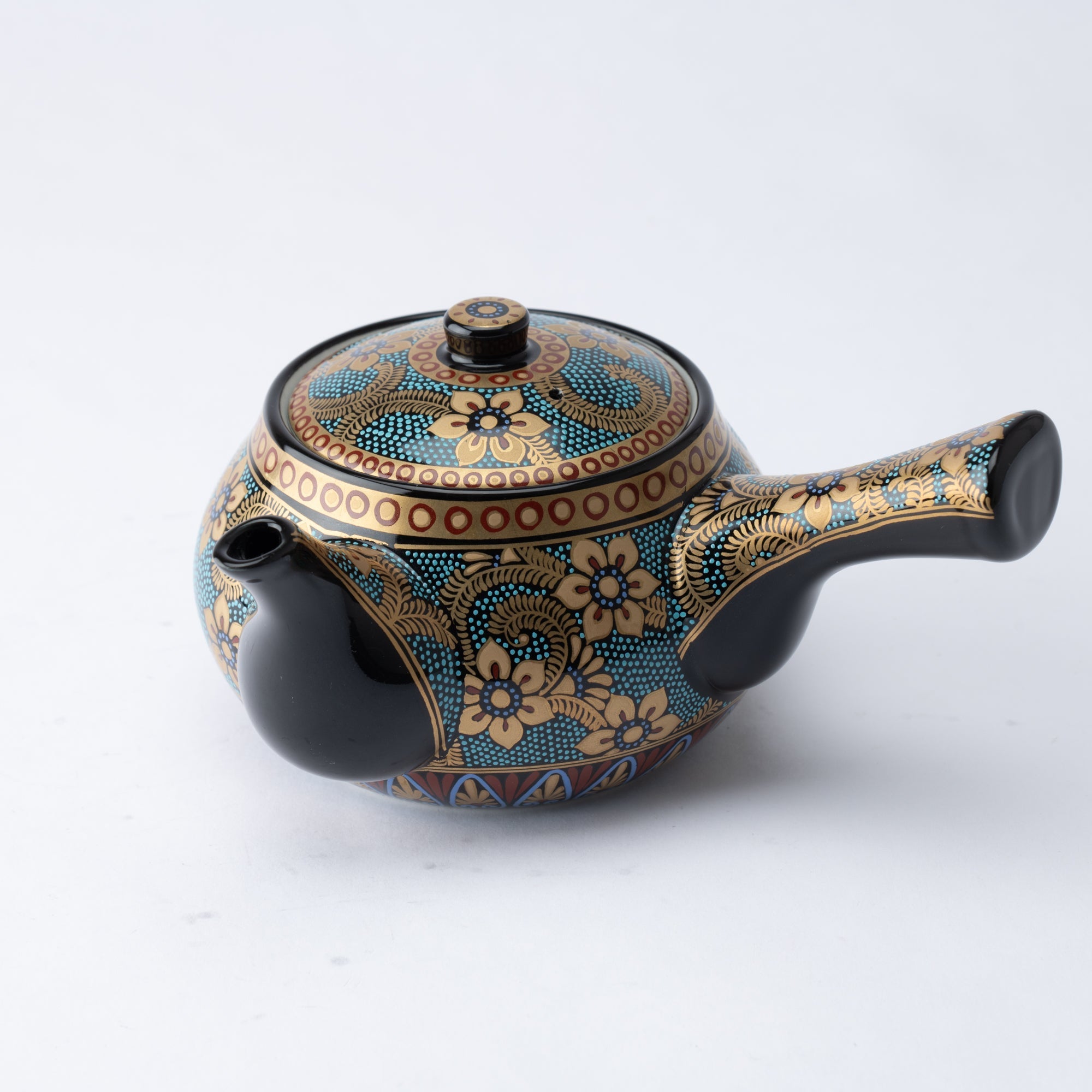
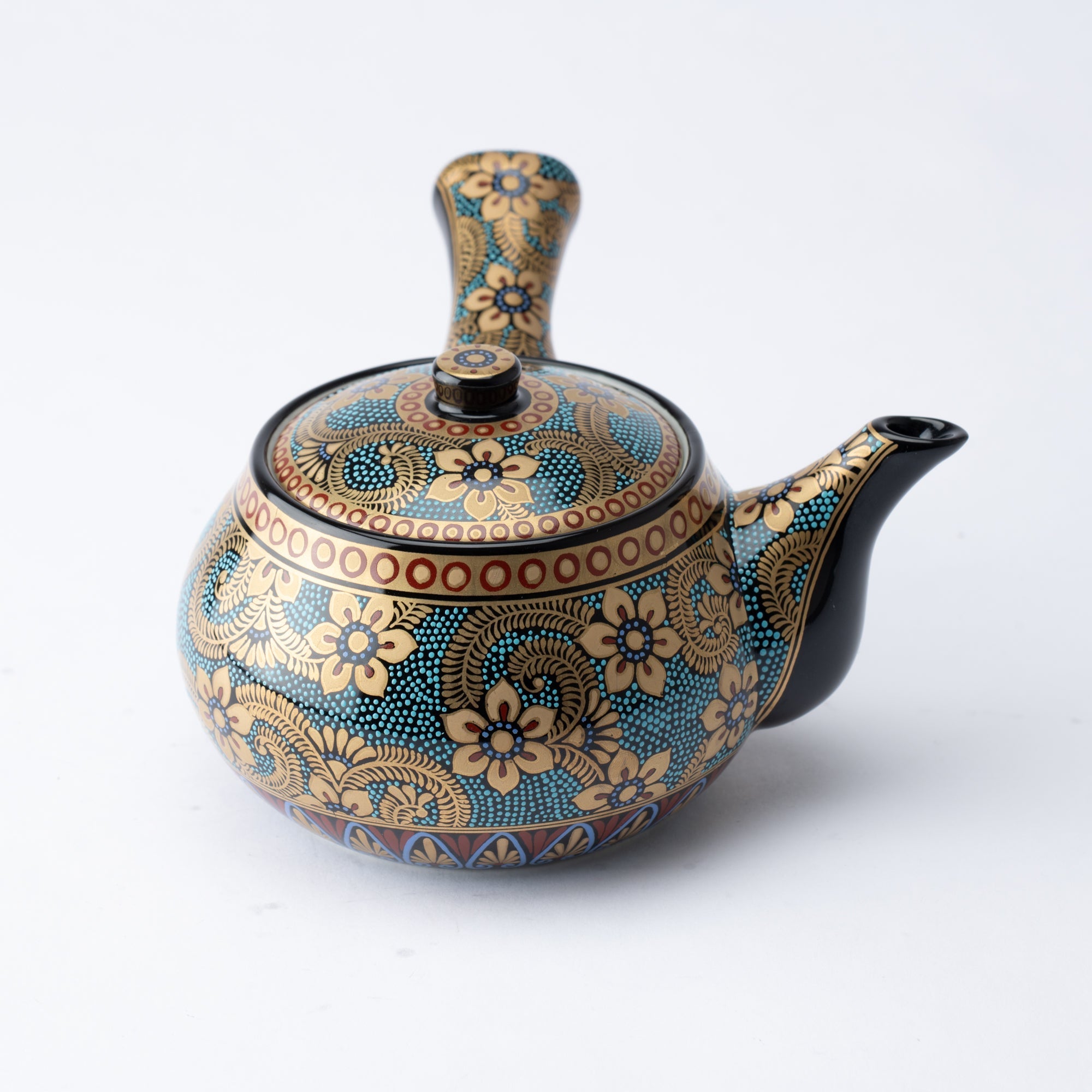
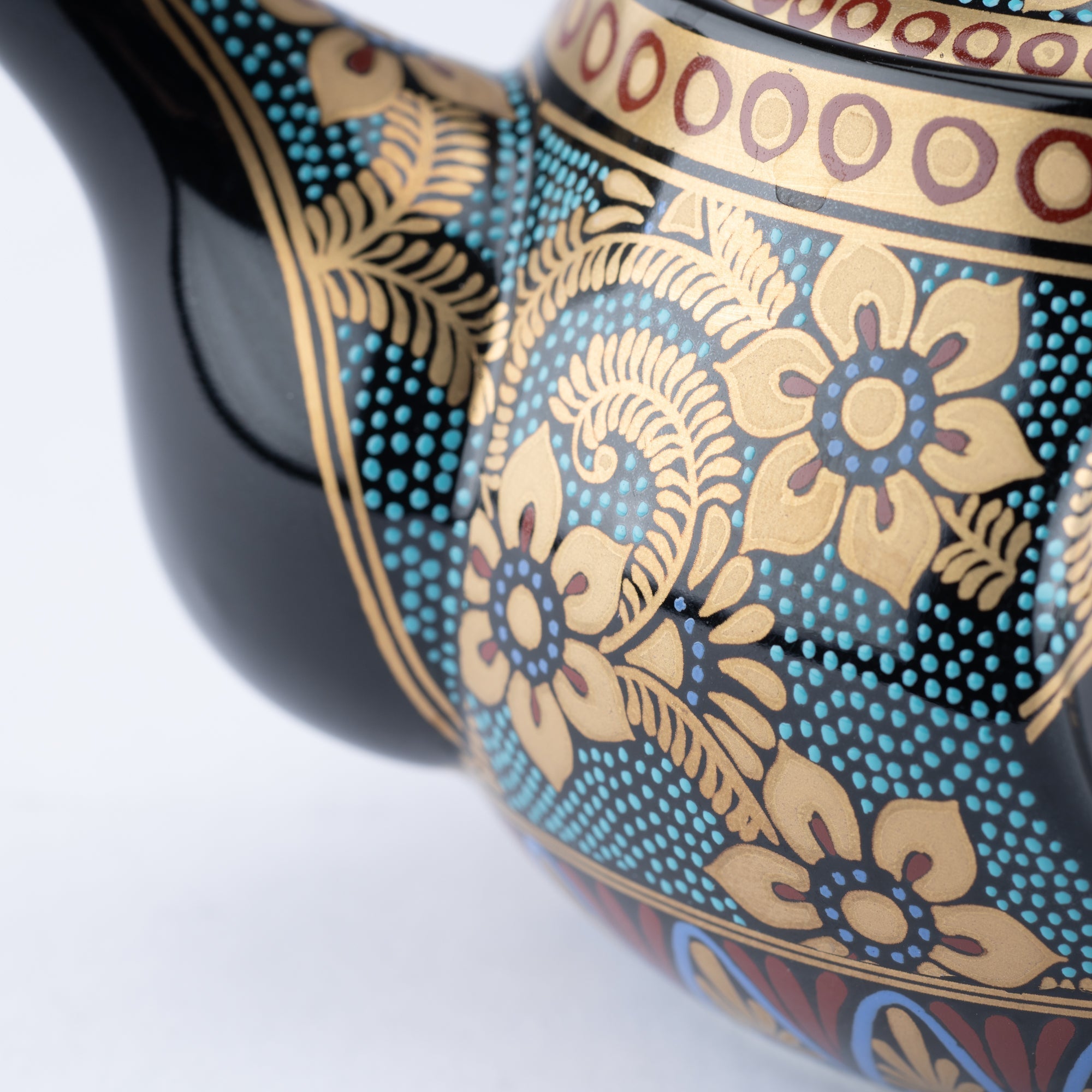
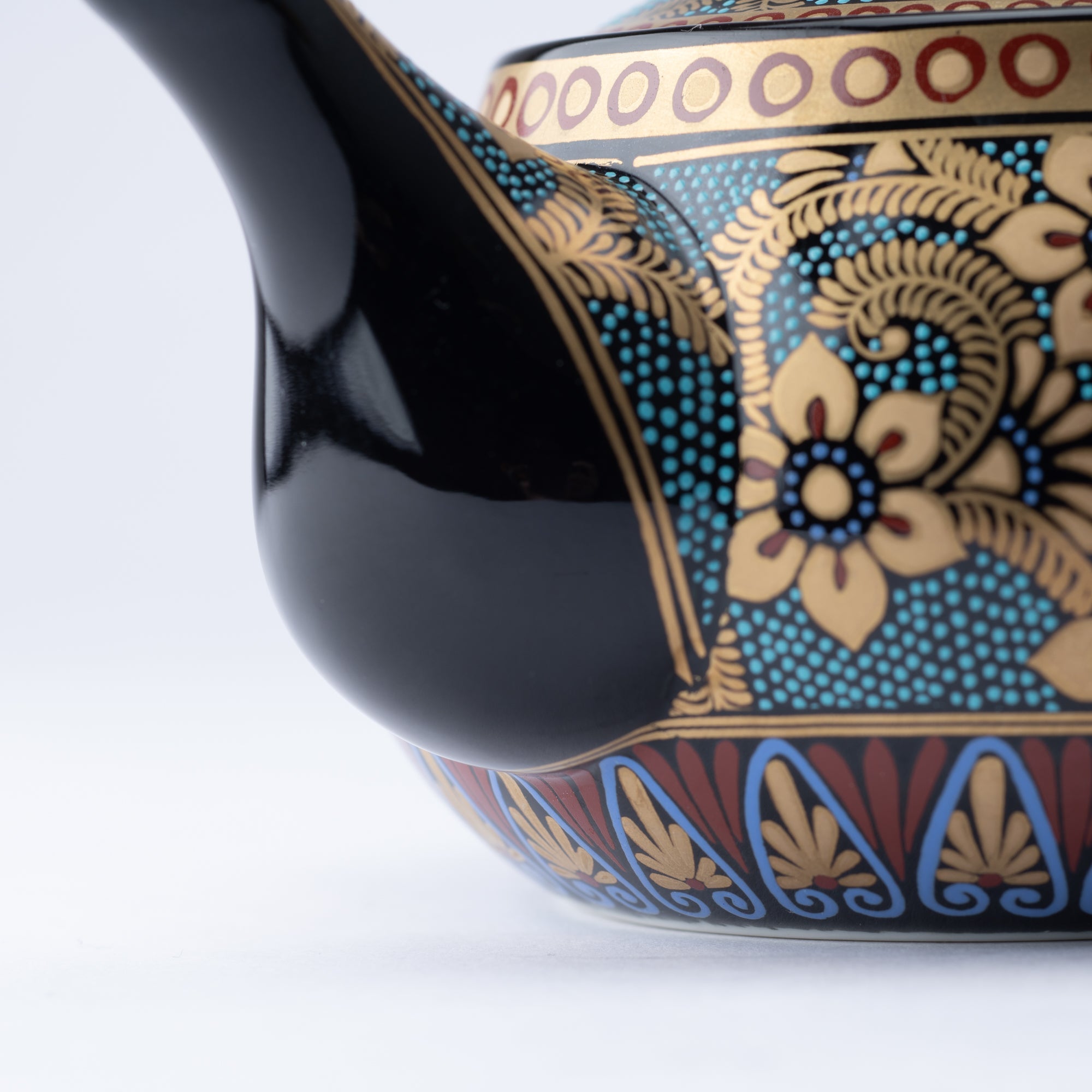
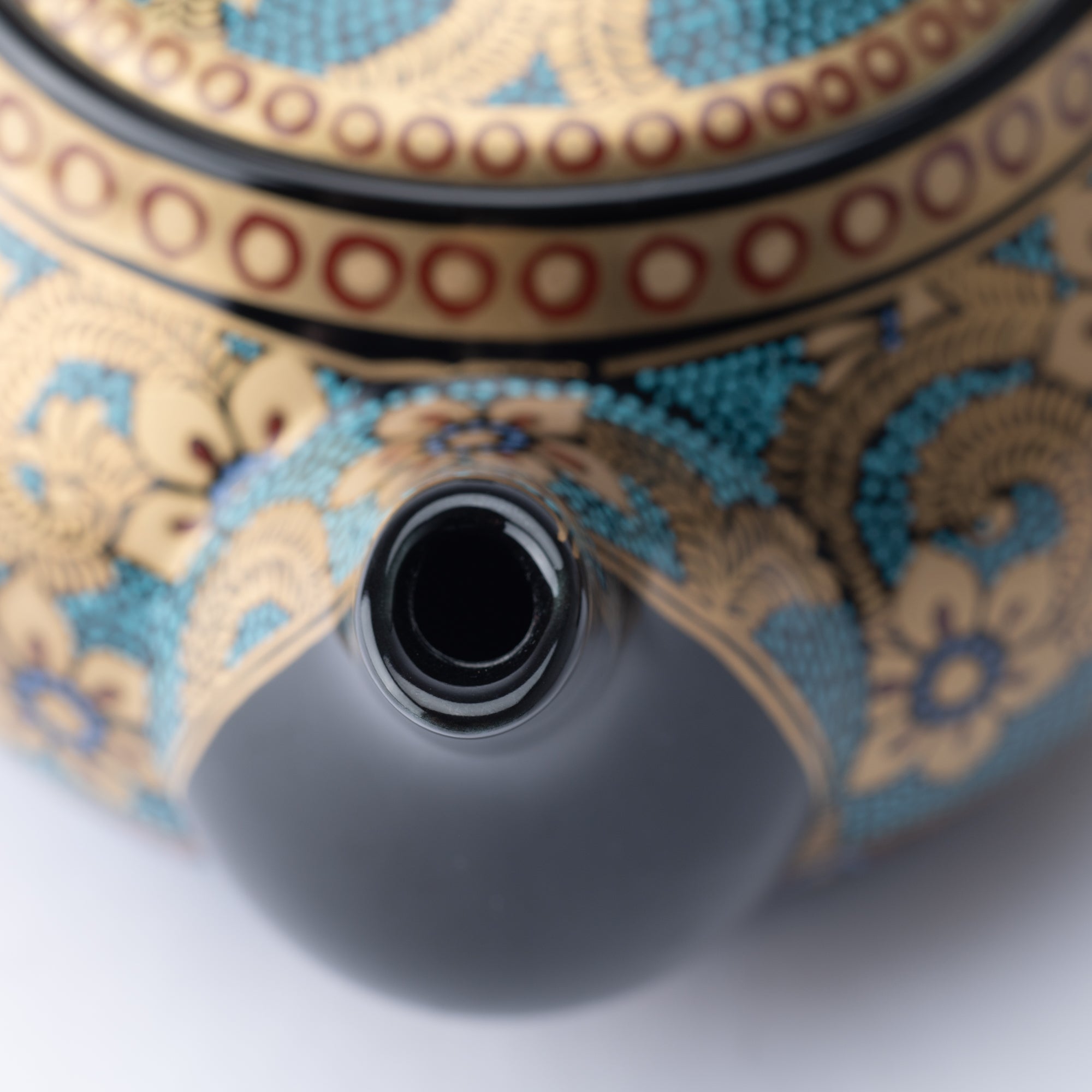
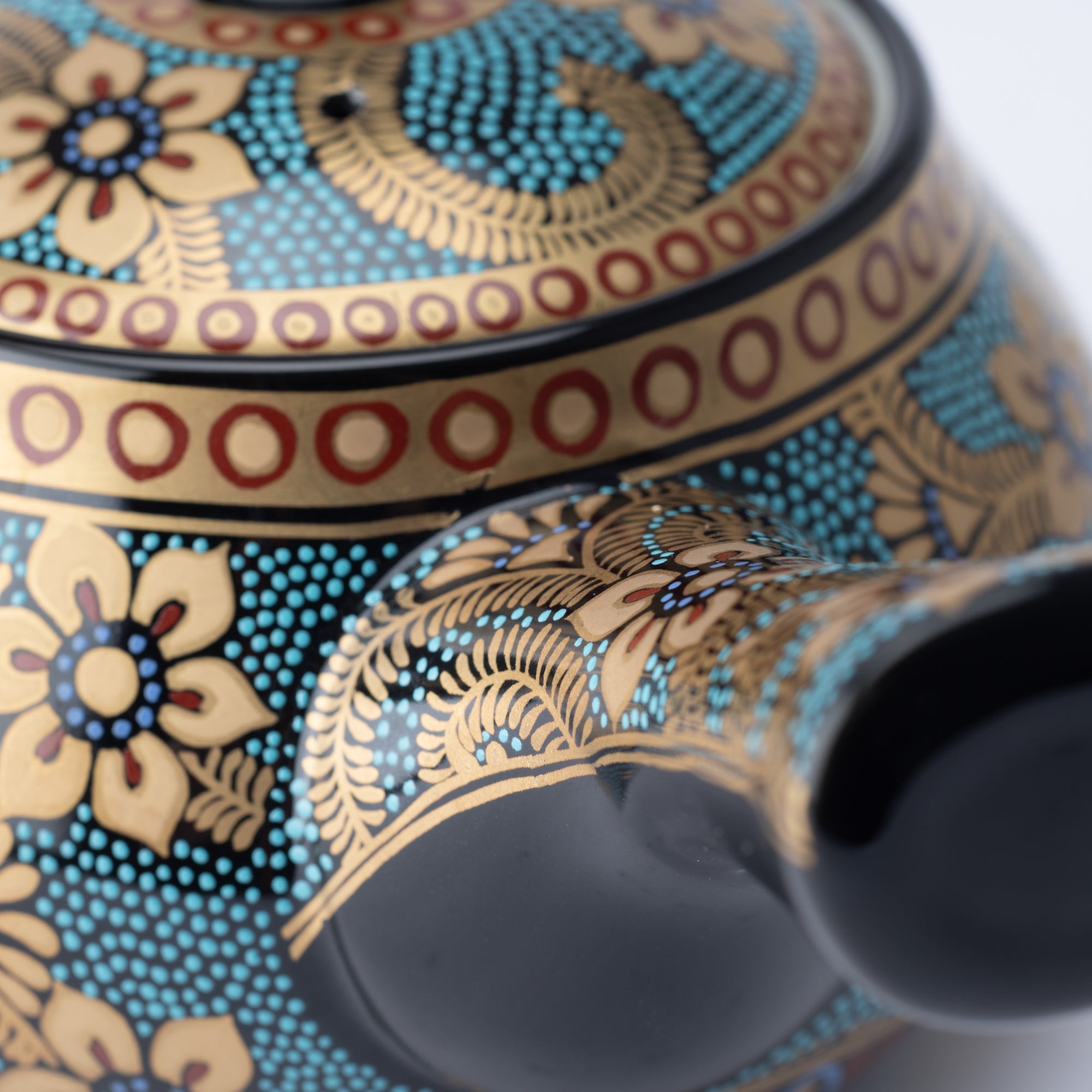
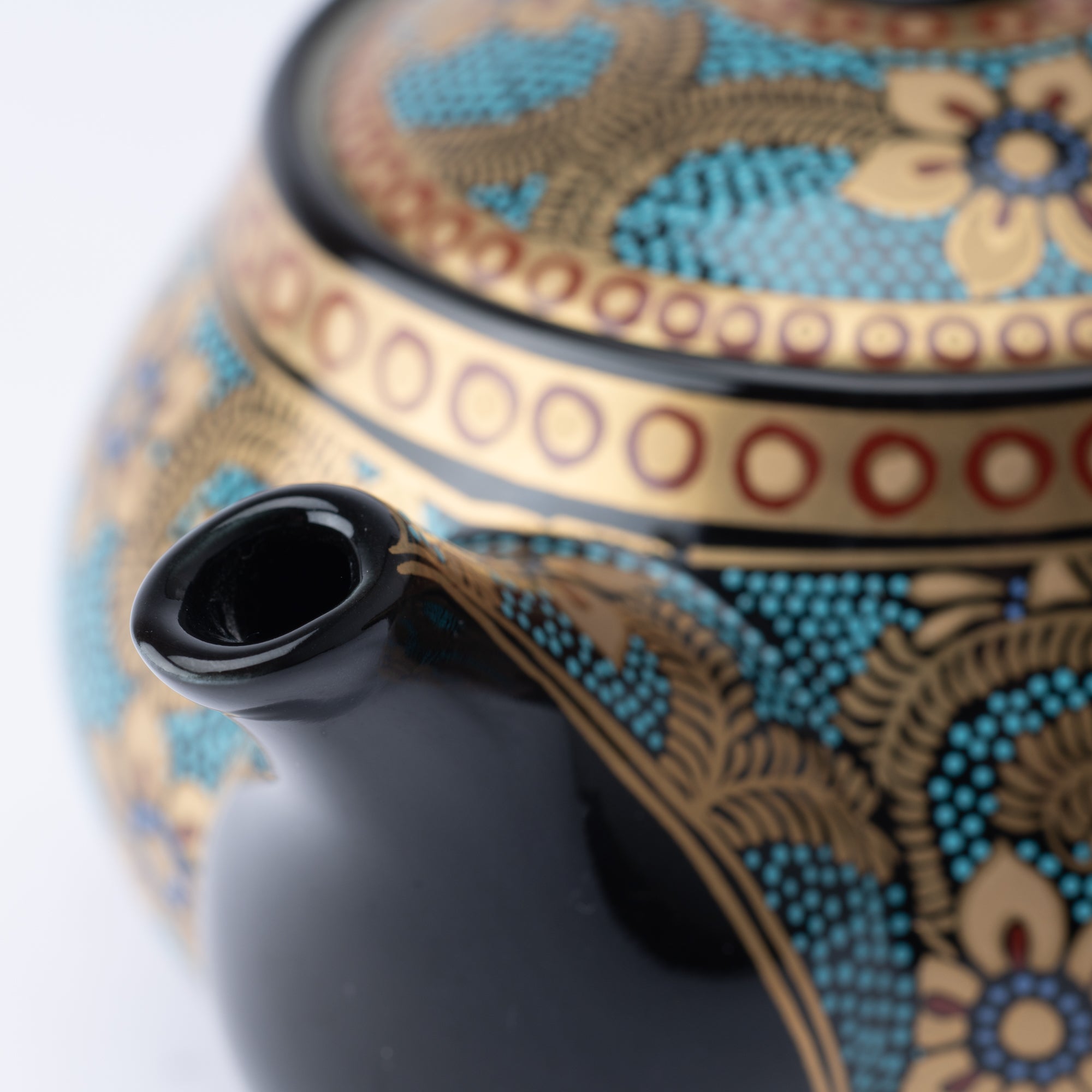
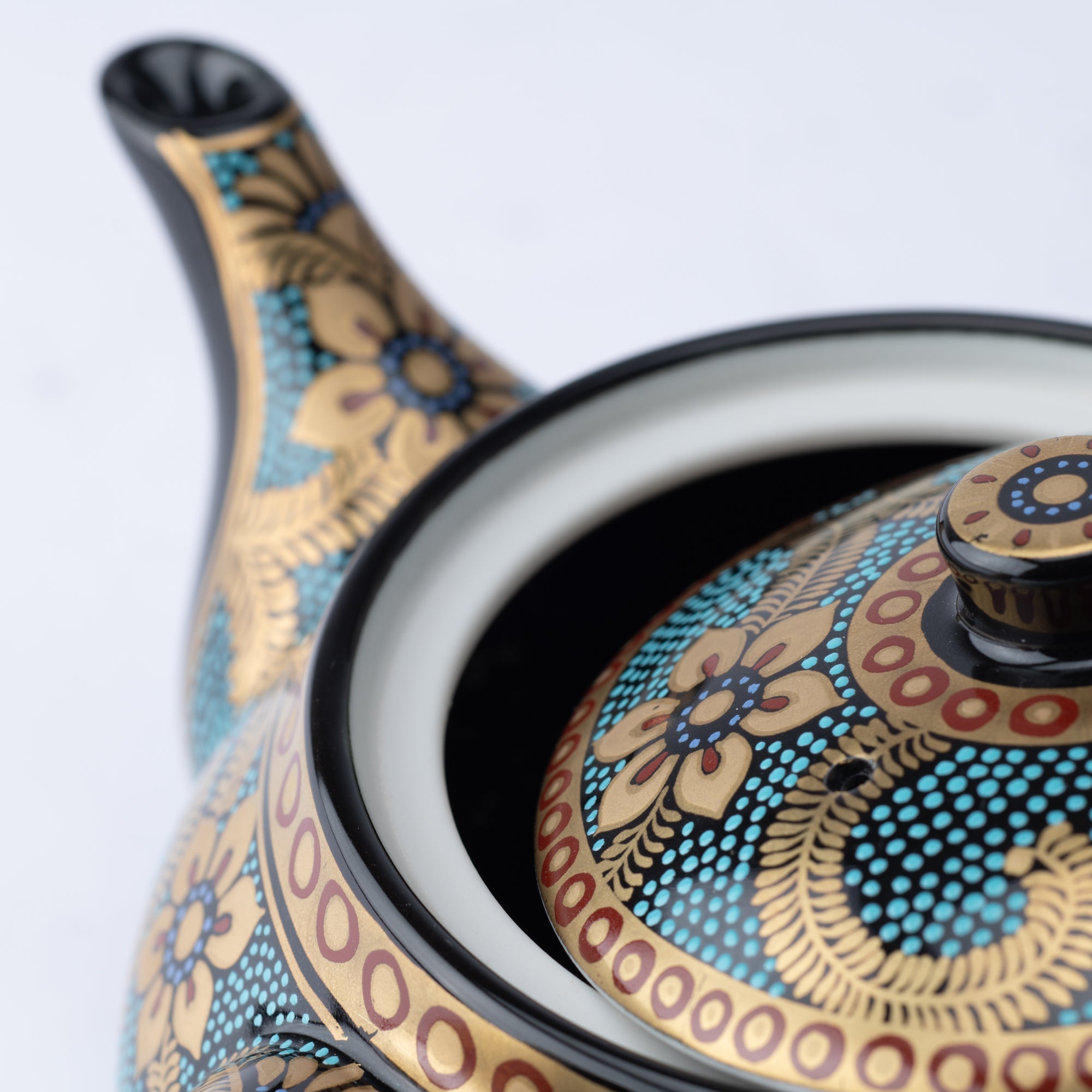
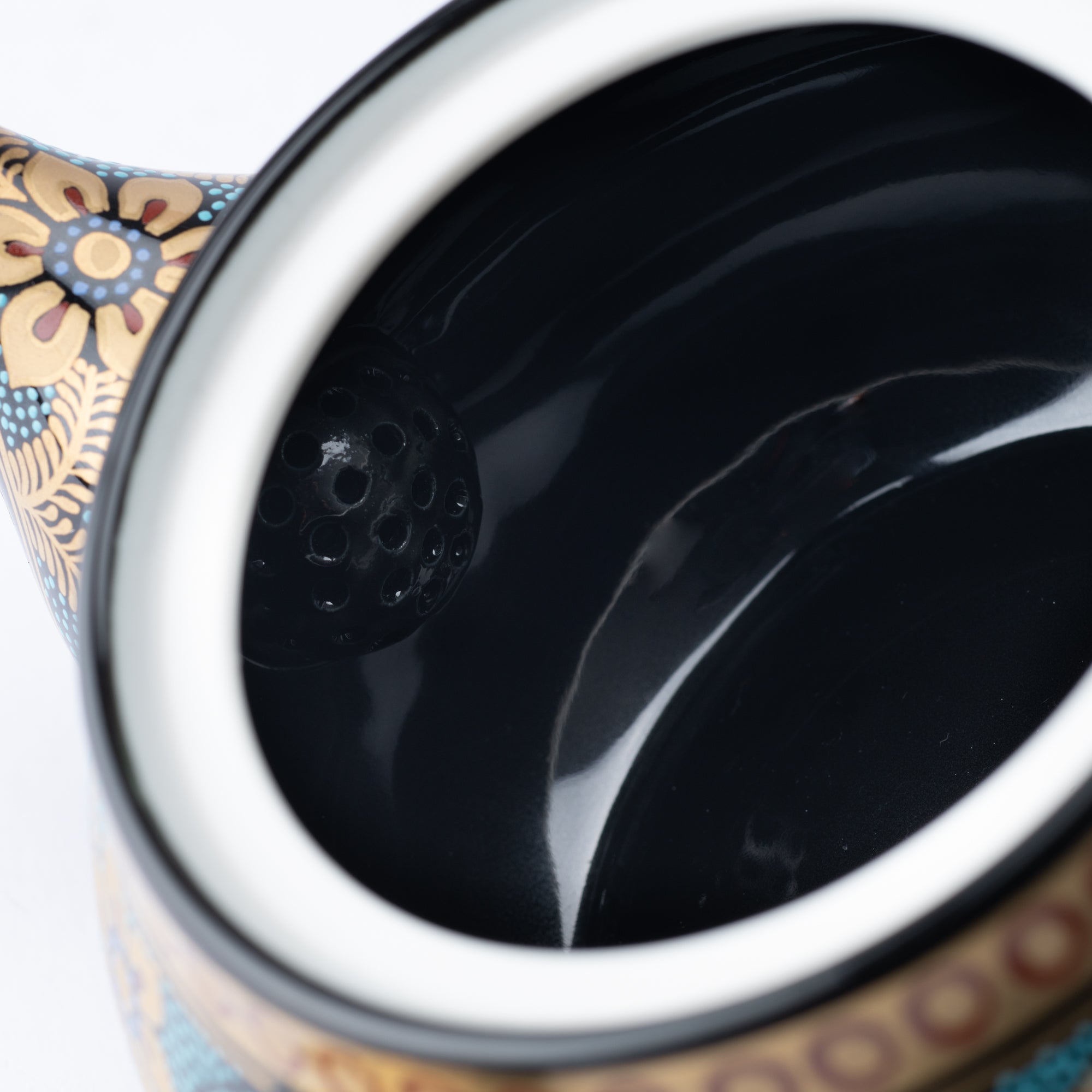
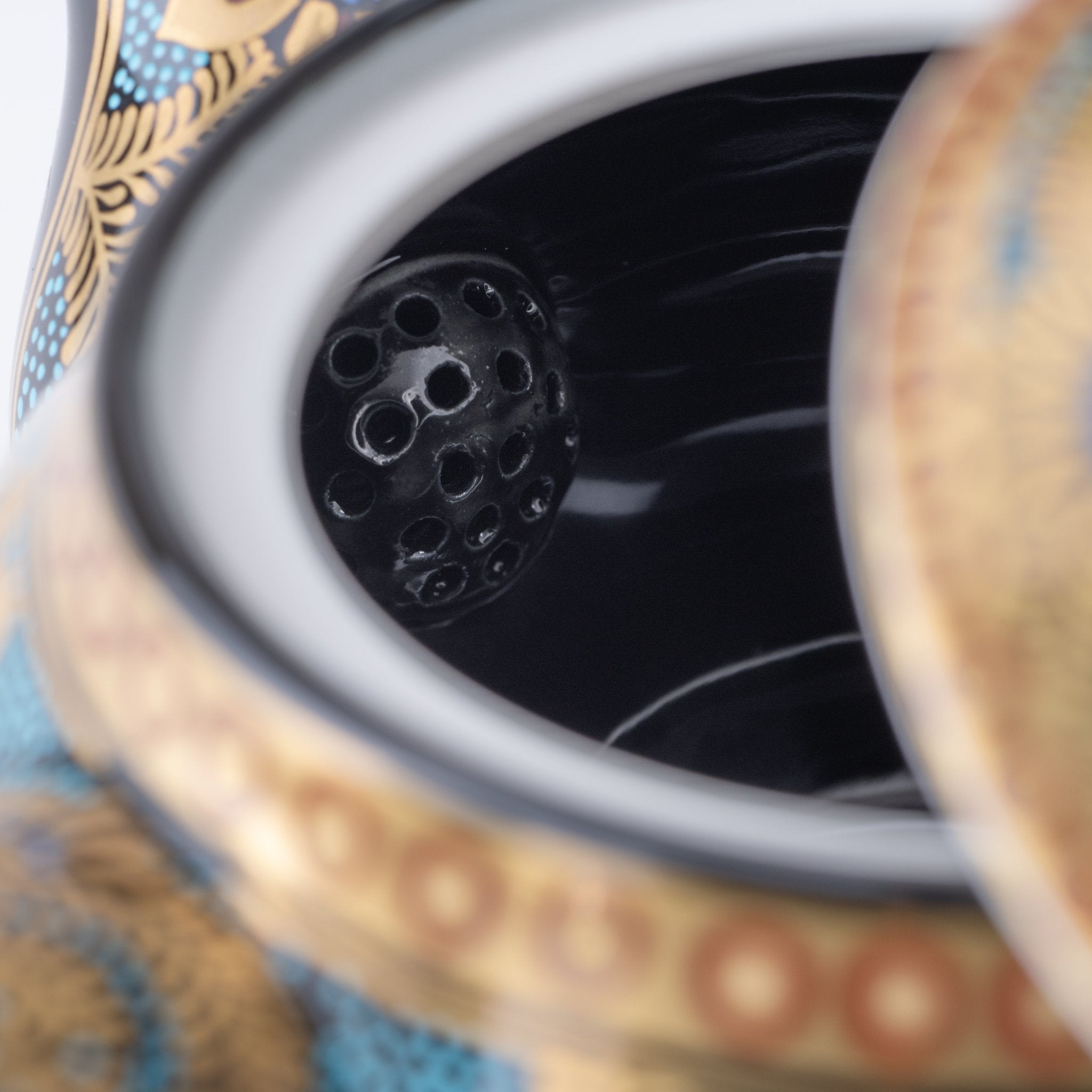
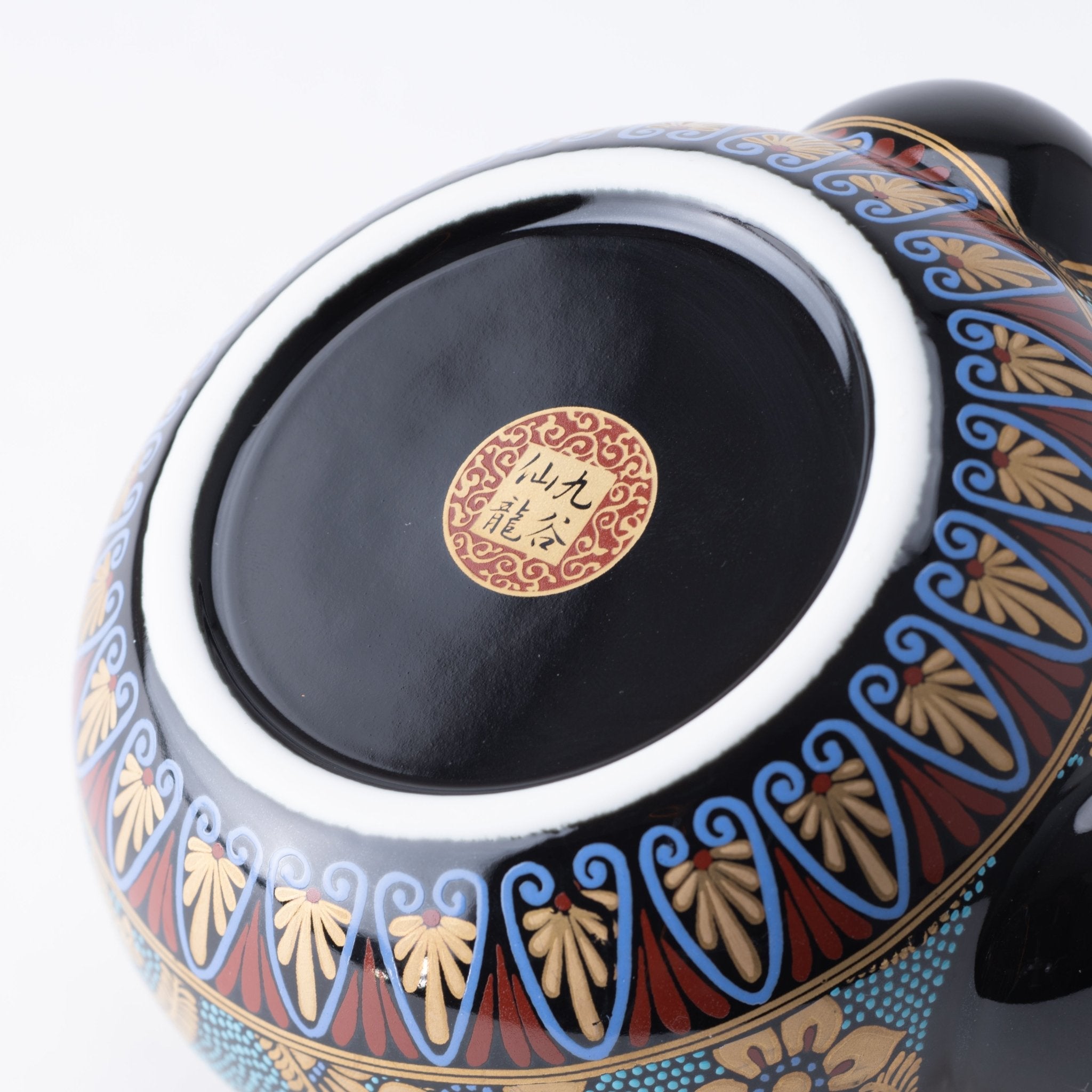
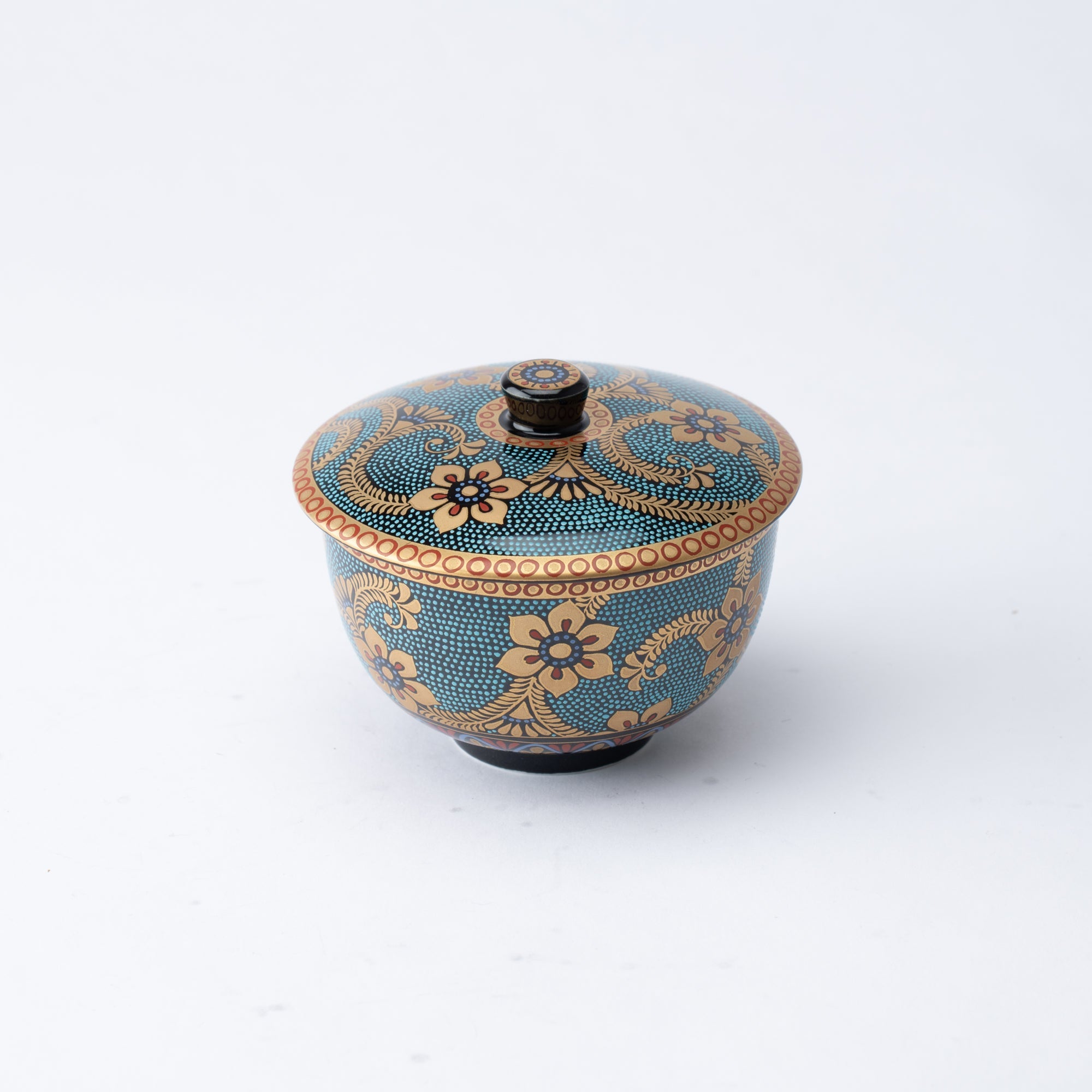
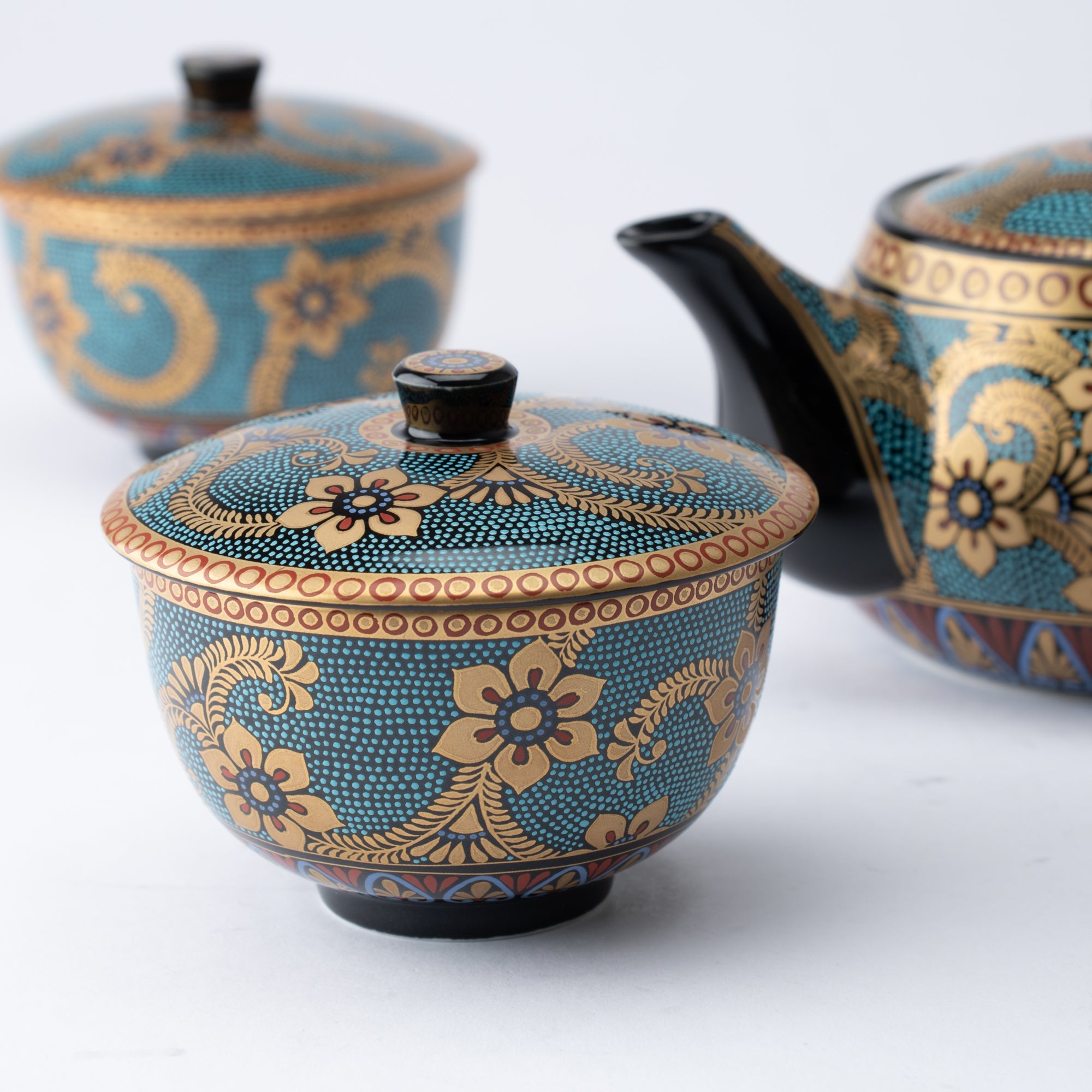
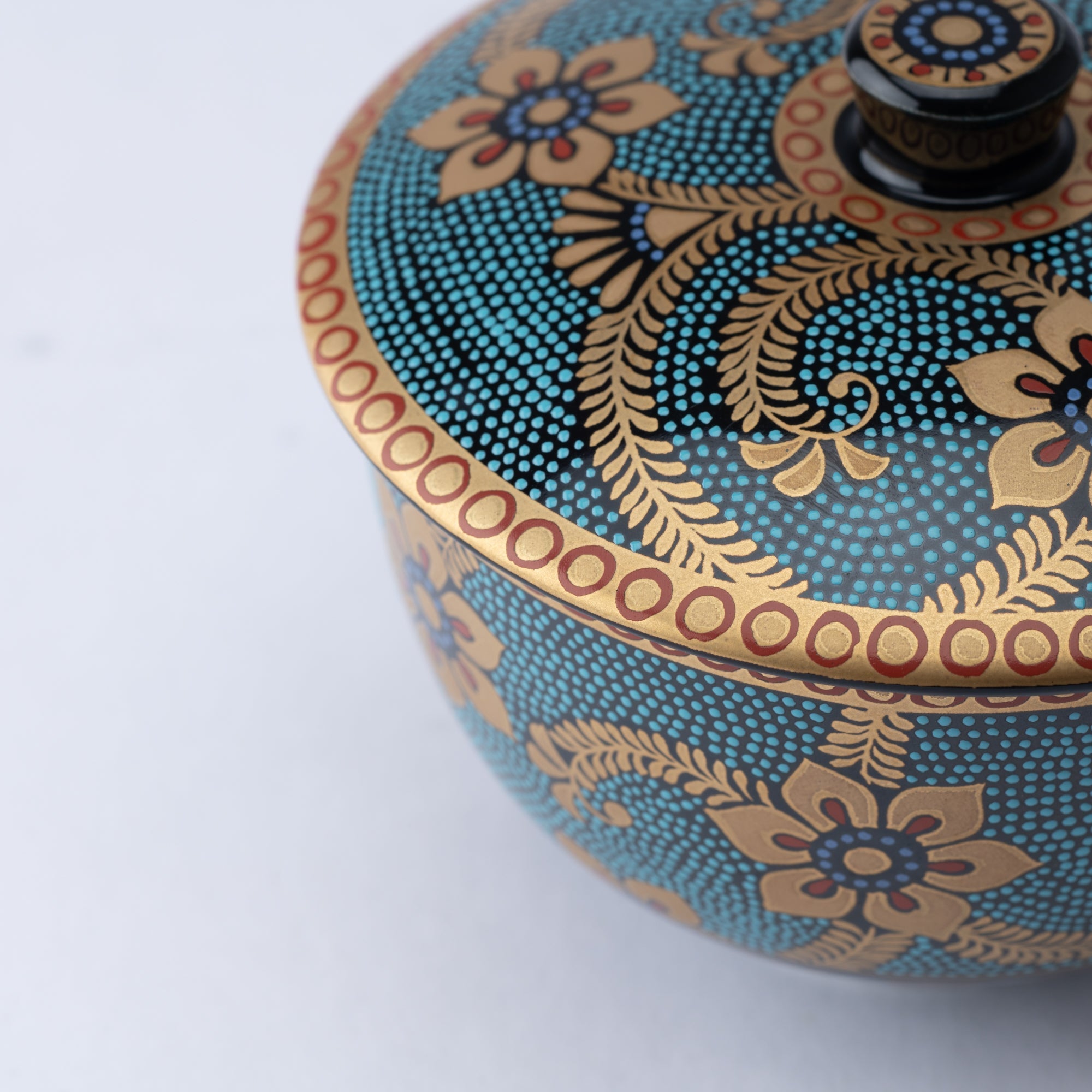
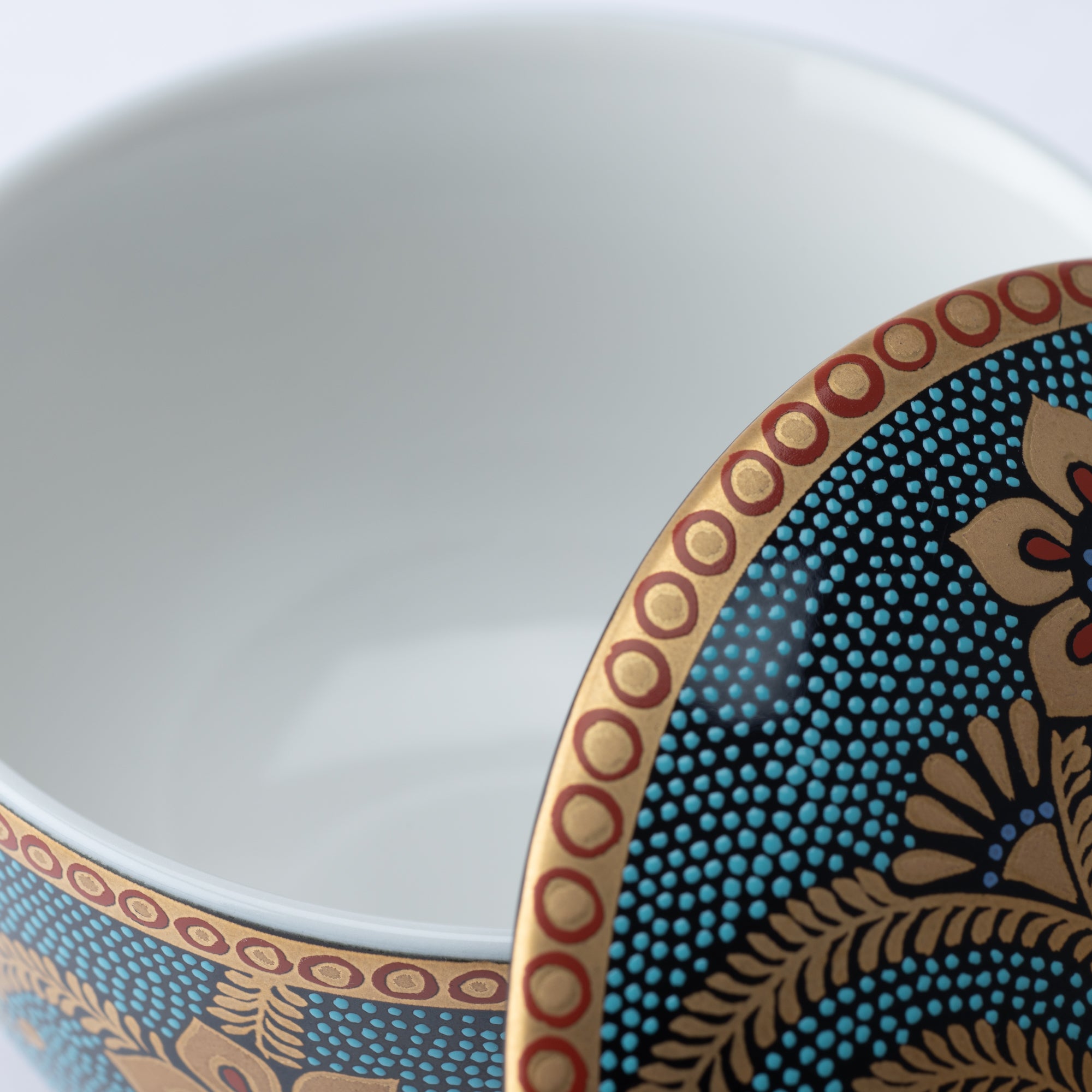
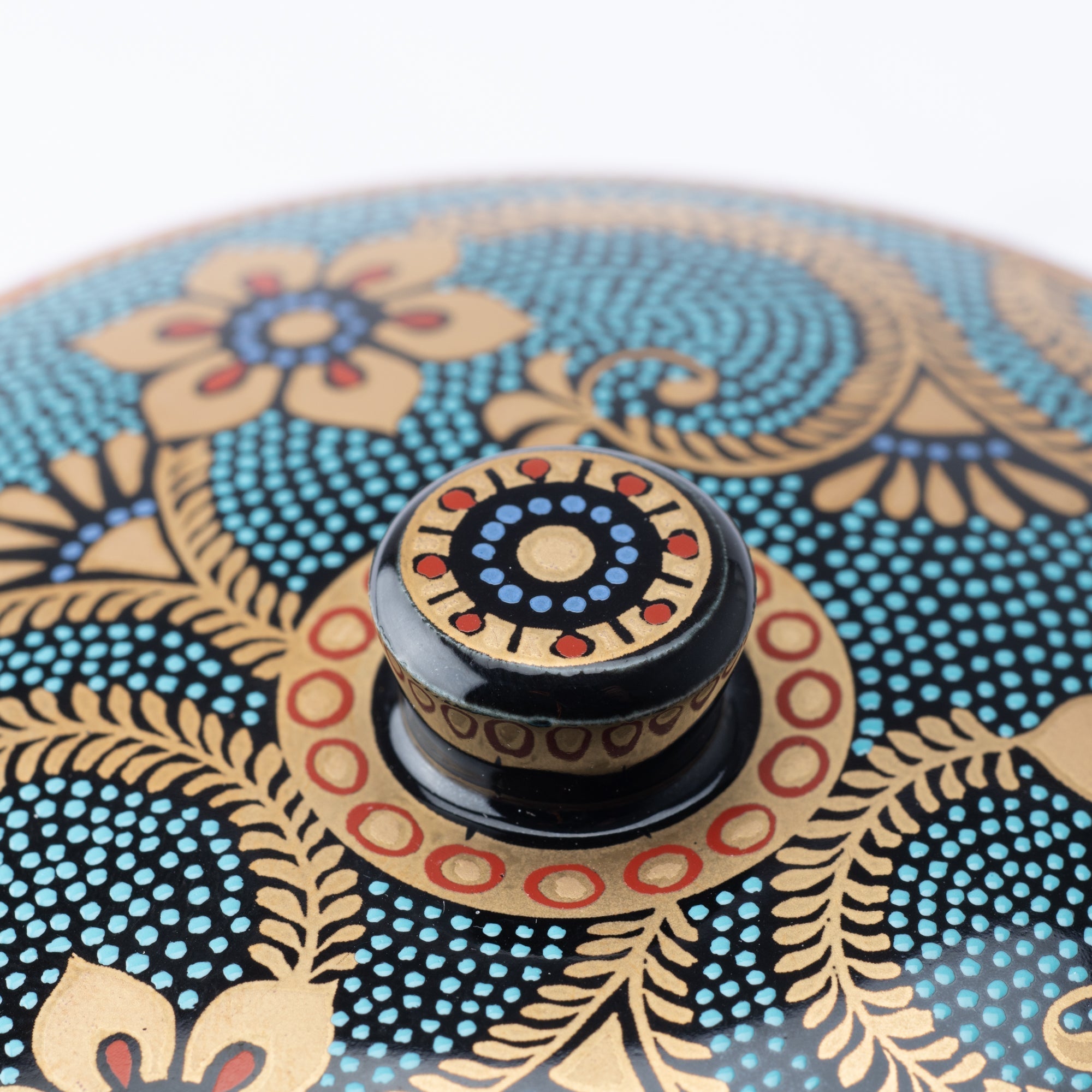
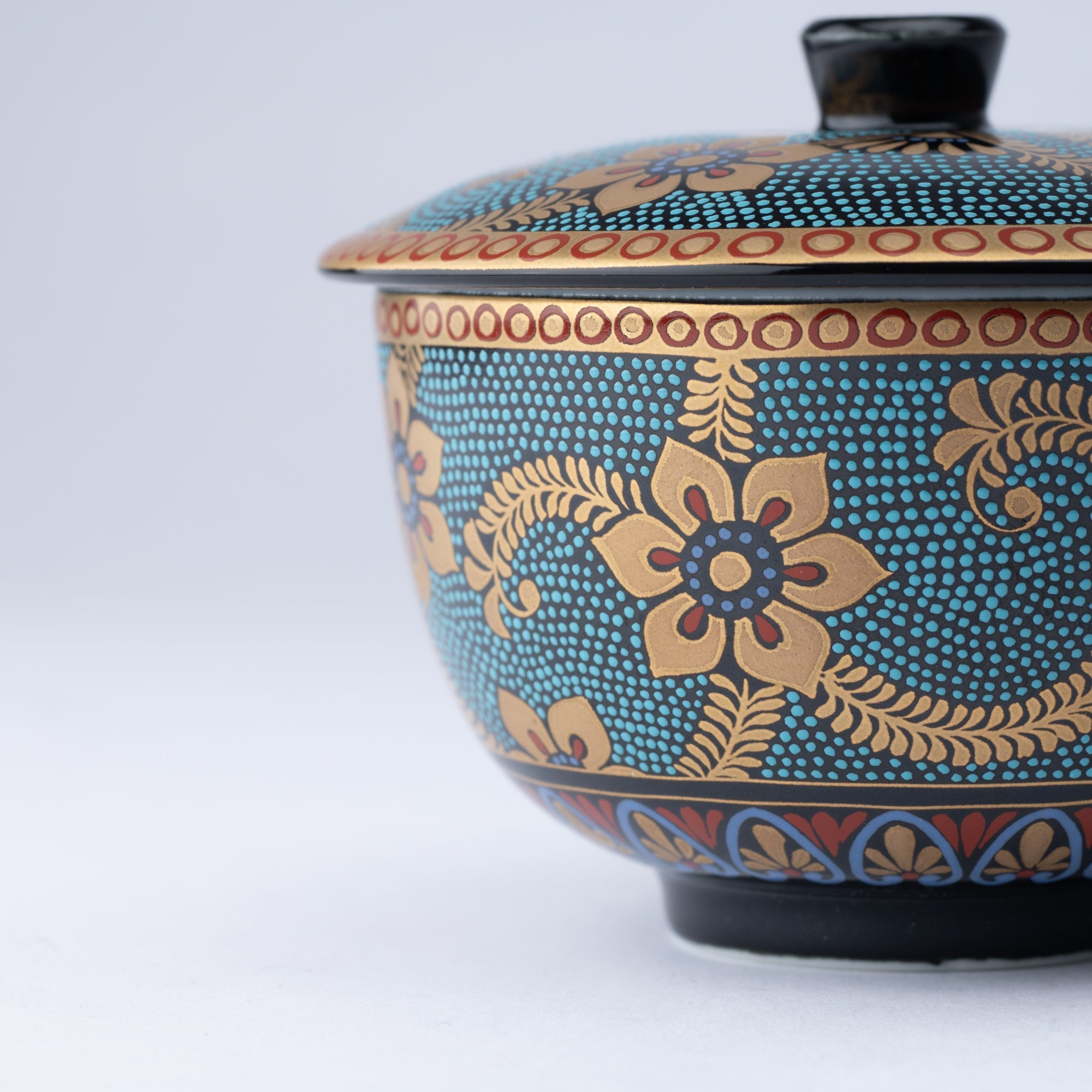
Aochibu and Gold Arabesque Kutani Japanese Tea Set
Estimated Shipping Widget will be displayed here!
DETAILS
| Quantity | 1 teapot and 5 teacups |
| Size | [Cup with lid] D 9 cm (3.5 in) x H 8.1 cm (3.2 in) |
| Capacity |
[Teapot] 360 ml (12.2 fl oz) [Teacups] 120 ml (4 fl oz) |
| Material | Porcelain |
| Package Type | Wooden box |
| Microwave | No |
| Dishwasher | No |
Crafts
Kutani ware is a pottery produced in the Kaga region of Ishikawa Prefecture, with a history spanning over 350 years. It is characterized by the heavy brilliance of the five colors of navy blue, red, purple, green, and yellow that are applied to the bold and daring lines. Its long history has evolved through the tireless efforts and enthusiasm of people who have sought innovation while maintaining tradition.
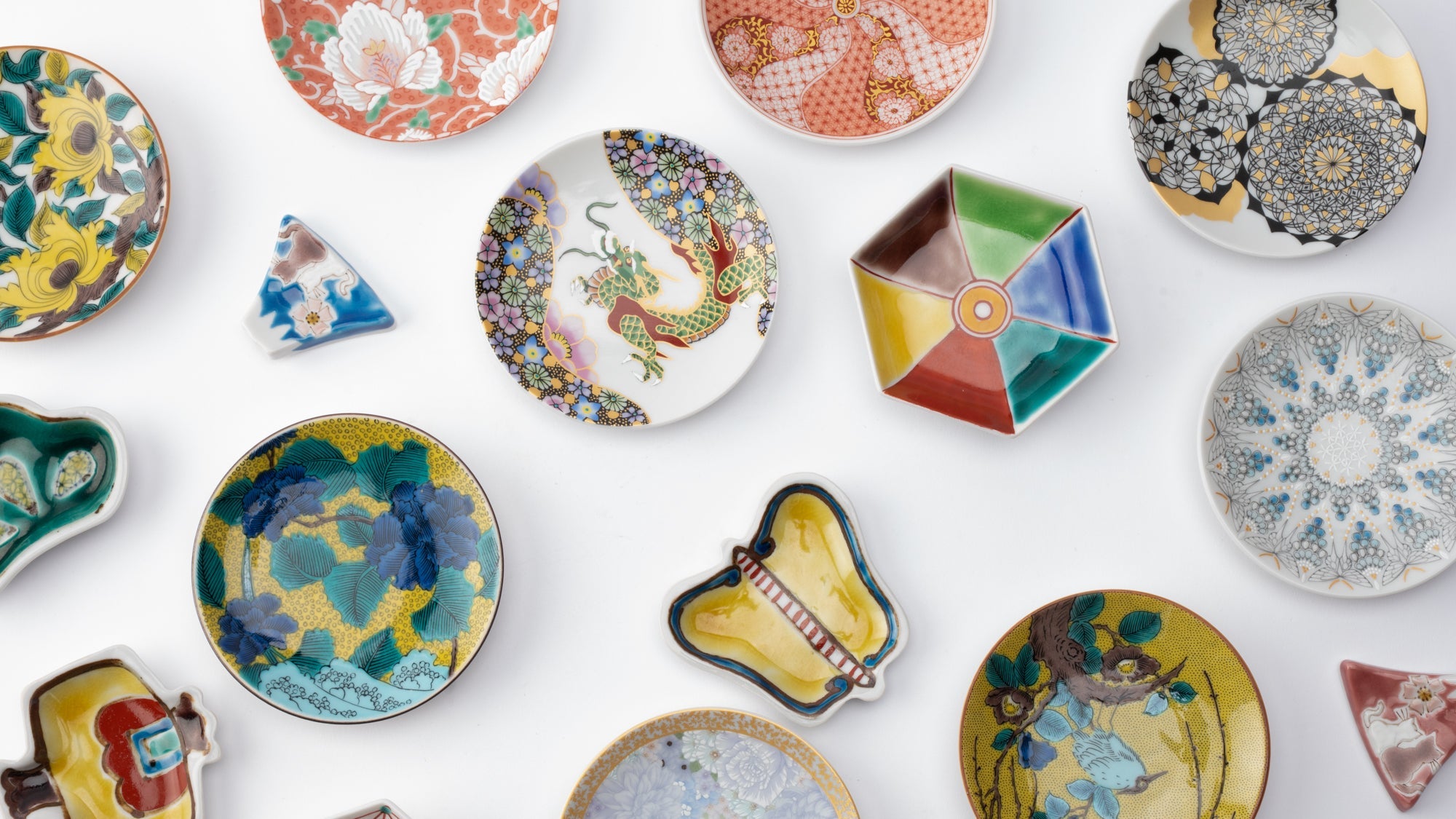
Choose options
























Estimated Shipping Widget will be displayed here!
Japanese Tea Sets
In Japan, ceramic teapots and tea cups come in a rich variety of forms, crafted in different regions using a range of materials and styles. This diversity reflects the depth of Japan’s tea culture and the distinctive character of local tea leaves cultivated across the country.
Our collection features carefully curated ceramic tea sets that pair teapots and cups in perfect harmony. Ideal for daily use or special gatherings, these thoughtfully designed sets, often presented in elegant boxes, make timeless gifts that convey warmth and appreciation.
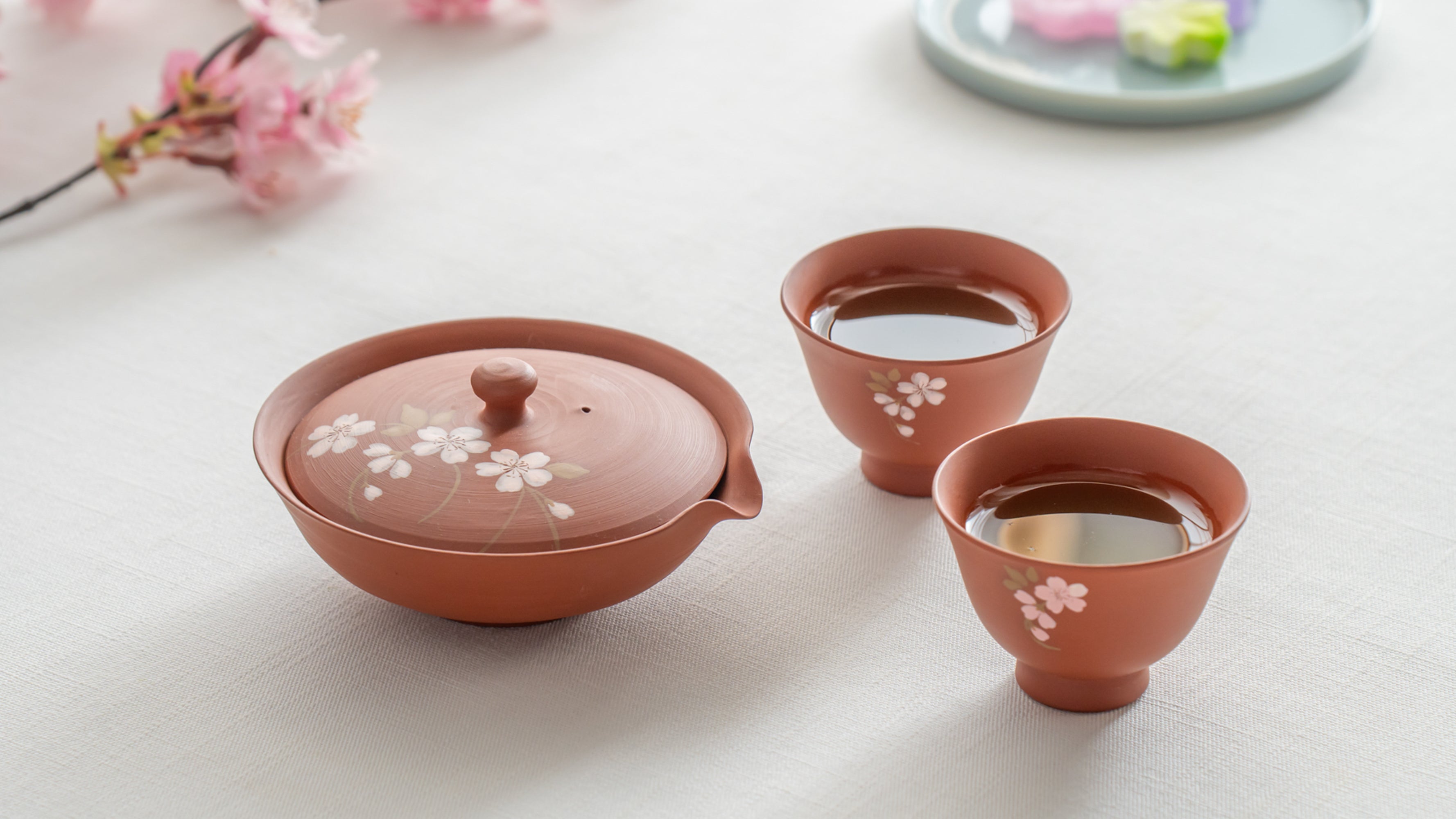
Aochibu & Shirochibu
Aochibu (literally "blue dots") features small, solid blue dots densely drawn on a base color. The technique is said to have become popular during the Taisho period (1912–1916 CE). It is neither exactly painting nor exactly line drawing, but rather falling somewhere in the realm of pointillism.
The rich clusters of dots create marvelous ripple-like patterns. It takes extraordinary skill to draw uniform, tiny dots while retaining the beauty of eaoch cluster. There are color variations of aochibu as well, including shirochibu (white dots) and kinchibu (gold dots).
